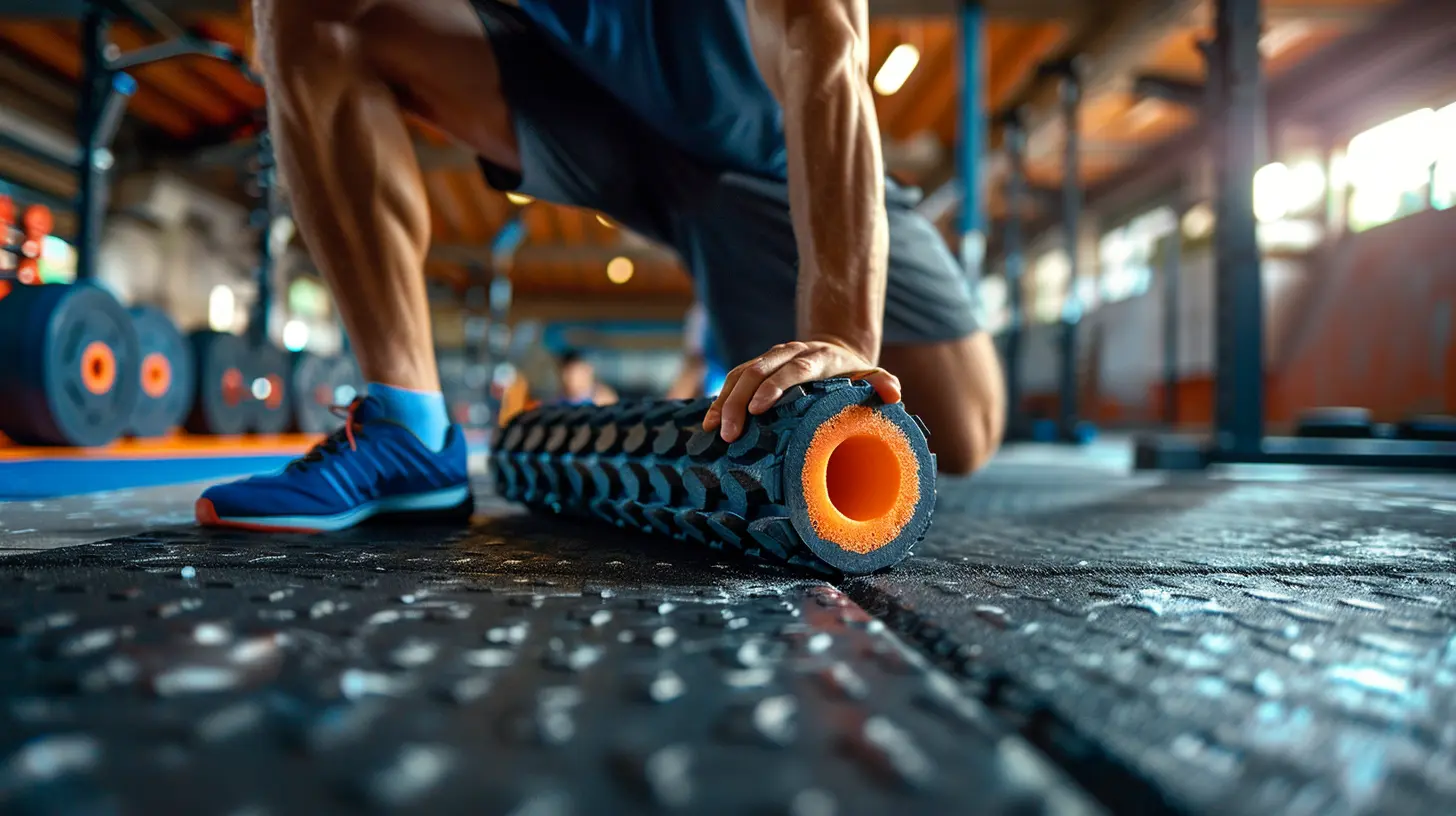16 April 2025
When it comes to post-workout recovery, most people think about stretching, hydration, and getting enough protein. But there's one powerful tool that often gets overlooked—foam rolling.
Ever felt those nagging knots in your muscles after a tough workout? That soreness that makes climbing stairs feel like an extreme sport? Foam rolling can be a game-changer for helping your body bounce back faster, reducing aches, and improving flexibility. Let’s dive into why foam rolling should be a part of your post-exercise routine. 
What Is Foam Rolling?
Foam rolling, also known as self-myofascial release, is a technique that involves using a foam roller to apply pressure to specific muscle groups. Think of it as giving yourself a deep tissue massage—without the hefty price tag.The main idea behind foam rolling is to break up muscle tightness, improve blood flow, and enhance mobility. It targets the fascia, a web-like connective tissue that surrounds muscles. When the fascia becomes tight or inflamed, it can restrict movement and cause discomfort. Foam rolling helps release this tension, giving your muscles the relief they desperately need. 
Why Should You Foam Roll After a Workout?
Post-workout recovery is just as important as the workout itself. If you’re not taking care of your muscles after exercise, you’re setting yourself up for stiffness, soreness, and potential injuries. Here’s why foam rolling can work wonders for your recovery:1. Reduces Muscle Soreness and Stiffness
We’ve all been there—waking up the day after an intense session, barely able to move thanks to delayed onset muscle soreness (DOMS). Foam rolling helps increase blood circulation, which speeds up the healing process by flushing out toxins and bringing in fresh nutrients to the muscles. It’s like hitting the fast-forward button on your recovery!2. Enhances Flexibility and Range of Motion
Tight muscles restrict your movement, making exercises feel harder than they should be. Foam rolling helps loosen up those knots, allowing your muscles to stretch and lengthen properly. The result? Better flexibility, improved athletic performance, and a reduced risk of injuries.3. Breaks Down Knots and Muscle Tension
Ever felt those painful, rock-like knots in your muscles? That's where foam rolling shines. Applying pressure to these tight spots helps break them down and relax the muscle fibers. Over time, this can prevent chronic tension and discomfort.4. Improves Blood Flow and Circulation
More oxygen and nutrients to your muscles mean faster recovery. Foam rolling stimulates circulation, promoting better nutrient delivery to fatigued muscles. Better circulation also means less stiffness and inflammation, helping your body recover quicker.5. Helps Prevent Injuries
Tight muscles increase your risk of strains and injuries. When your muscles are flexible and relaxed, they function more efficiently, reducing the chances of overuse injuries. Foam rolling before and after workouts helps maintain muscle health, keeping you in the game longer.6. Boosts Relaxation and Reduces Stress
Beyond the physical benefits, foam rolling has a calming effect on the nervous system. By releasing tension in your muscles, you signal your body to relax, which can help reduce stress and even improve sleep quality. Who doesn’t love a two-for-one benefit?
How to Foam Roll Like a Pro
Okay, so you’re convinced that foam rolling is worth a try. But how do you do it effectively without wincing in pain? Here’s a simple step-by-step guide:1. Choose the Right Foam Roller
Foam rollers come in different densities—soft, medium, and firm. If you're new to foam rolling, start with a softer roller to avoid excessive discomfort. As you get used to it, you can switch to a firmer roller for deeper pressure.2. Roll Slowly and Focus on Tight Spots
Take your time! Rolling too fast won’t give your muscles enough time to relax. Move slowly and spend extra time on sore or tight areas. If you hit a painful spot, hold the position for 20-30 seconds to let the muscle release.3. Target Key Muscle Groups
Focus on muscles that tend to get tight post-workout:- Quads – Roll from your hip to your knee.
- Hamstrings – Place the roller under your thighs and roll from your glutes to your knees.
- Calves – Roll from your ankles to just below the knee.
- IT Band – Lie on your side and roll from your hip to your knee (this one can be a bit uncomfortable).
- Lower Back – Gently roll from your mid-back down to your lower back.
4. Don’t Overdo It
Yes, foam rolling can hurt—especially if your muscles are tight. But don’t push through extreme pain. A little discomfort is normal, but if you feel sharp pain, ease up. Remember, recovery should feel good, not unbearable.5. Breathe and Relax
Many people tense up when they roll over sore spots. Instead, take deep breaths and try to relax. The more you ease into it, the better the results.
When Should You Foam Roll?
Timing matters when it comes to foam rolling. Here’s when you should use it:1. Post-Workout Recovery
After an intense session, your muscles are tight and full of lactic acid. Foam rolling at this stage helps reduce muscle soreness and speeds up recovery.2. Pre-Workout Warm-Up
Foam rolling before your workout can help wake up your muscles, increase blood flow, and prepare your body for movement.3. On Rest Days
Even on days when you're not working out, foam rolling is a great way to keep your muscles loose and prevent tightness from building up.Common Foam Rolling Mistakes to Avoid
Foam rolling is simple, but a few common mistakes can make it less effective (or even harmful). Make sure you avoid these pitfalls:❌ Rolling Too Fast – Slow, controlled movements are key.
❌ Spending Too Little Time – Just a few seconds won’t do much; hold positions on tight spots.
❌ Rolling Over Joints or Bones – Stick to muscles to avoid injury.
❌ Holding Your Breath – Relax and breathe deeply to maximize benefits.
Final Thoughts
Foam rolling is one of the easiest and most effective ways to speed up post-workout recovery, reduce soreness, and improve flexibility. Whether you're a seasoned athlete or a weekend warrior, adding foam rolling to your routine can make a huge difference in how your body feels and performs.So next time you finish a tough workout, grab that foam roller and treat your muscles to some much-needed care. Your future self will thank you!


